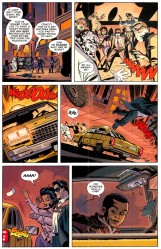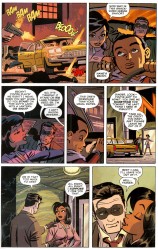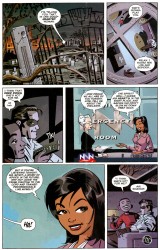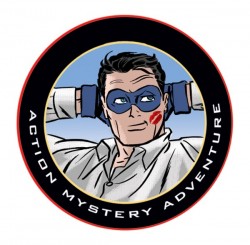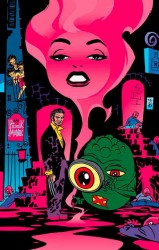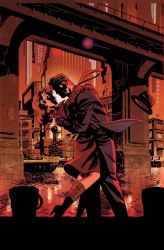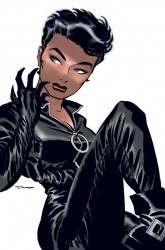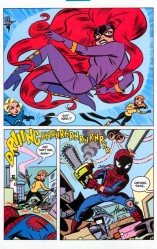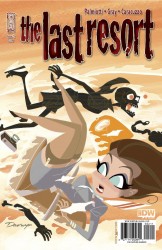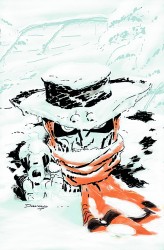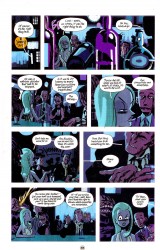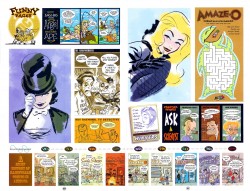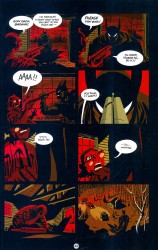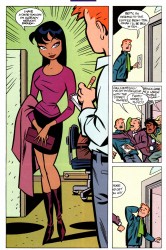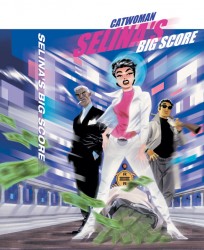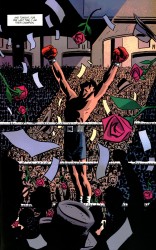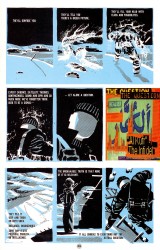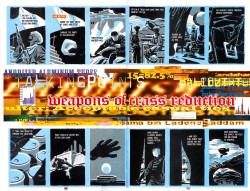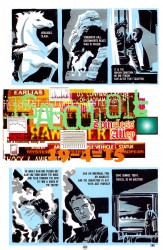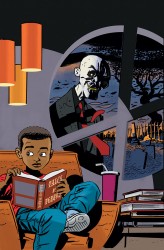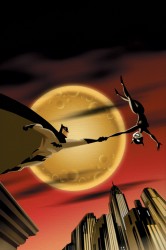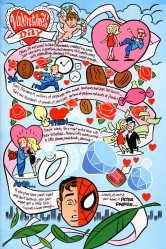
Darwyn Cooke’s Richard Stark’s Parker: The Hunter
September 18th, 2009 Posted by david brothersThere are three books all comics readers should be forced to read this year, at gunpoint if necessary. One is David Mazzucchelli’s Asterios Polyp. It’s the kind of book you read a couple times, discuss with your friends, and dig into to figure out what it really means. The second is Naoki Urasawa’s Pluto. Pluto re-contextualizes a children’s character for an adult audience and creates a compelling work that inspires complicated emotional reactions and rewards careful reading. The third is Darwyn Cooke’s Parker: The Hunter, which presents a classic revenge tale in a new format and is just an all-around great read.
Richard Stark’s The Hunter is a classic novel and an almost archetypal revenge tale. Man is wronged by his partner and his woman, has his money stolen, and is on a quest to get it back, no matter the consequences. The titular hunter is Parker, no other name given, and he is, almost to a fault, a professional crook.
Cooke’s adaptation a word for word transplant of the novel into comic form, nor the rote adaptation of a work you’d see other companies hack out to secure a quick buck. Cooke took the book, examined what worked as a novel, figured out what would work as a comic, and, well, he did it and he succeeded.
There are two two-page spreads in The Hunter, which are roughly 80 pages away from each other. The first of two two-page spreads opens the book with an overhead shot of a city, with “New York City 1962” stamped on top of it. The second spread is inevitable, something we all knew was coming and eager to see. Parker finally locates and gets a chance to get his hands on Mal, who has literally been caught sleeping.
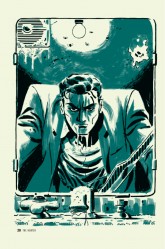 That first spread is a starter’s pistol, as the next 80-some pages build up directly to the second spread. We see Parker’s long walk into the city and solvency, a largely wordless sequence save for a couple of muttered insults. While the wordlessness is nice, the real thing to pay attention to is Parker’s reaction to society.
That first spread is a starter’s pistol, as the next 80-some pages build up directly to the second spread. We see Parker’s long walk into the city and solvency, a largely wordless sequence save for a couple of muttered insults. While the wordlessness is nice, the real thing to pay attention to is Parker’s reaction to society.
He blends in very well. People, innocent people, offer him rides, give him blushing looks, and proposition him. He’s large and imposing, but he isn’t immediately identified as trouble. He’s enticing. Parker’s reaction to all this, though, is contempt at every turn. He tells the man who offers him a ride to “go to hell,” he walks down the middle of the bridge, he hops a subway turnstile, and he bums a smoke off a cute waitress before blowing the smoke in her face and leaving. Parker’s an outlaw. He’s got no place in proper society, and he doesn’t want one. He knows that he can take what he wants and, with proper planning, get away with it.
When the words come back, Parker’s reintroduction to the world is over and he’s all business from there on out. There’s little to no emotion to be found, and Cooke’s art reflects that. He doesn’t break from a strict grid for action shots or cool poses. It just hits, one after the other- bam-bam-bam.
When the grid finally breaks, it’s due to a change in the story. Parker’s flashback of his betrayal forces the words and the art into separate boxes, giving both room to breath and stretch their legs. They snap back to the grid soon after, though, and the story proceeds apace.
The first spread comes before books one and two. Book one is Parker’s reintroduction, while book two features the last days of the traitor, Mal. The second spread is the last image in book two, and it’s Parker coming through the window for Mal’s throat.
While the first two books were far from actionless, the second spread sets the stage for the rest of the book. Parker is within spitting distance of his target, and from here on out there is only going to be violence and death. Book three is the chase, and culminates in the end of Mal Resnick.
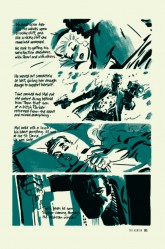 Mal’s death, despite being a big deal, is treated as economically as the rest of the book. There’s no grand struggle, no promises, nothing. There is just a man and his big hands wrapped around the throat of the man who wronged him. Cooke is telling a story first and foremost, and everything is subject to that. Dialogue is to the point, the art enhances what’s going on. Characters act through facial expressions and body language. When Parker twists the filter off a cigarette, that’s character. When he slouches on a couch to sleep and awakes from his nightmare, you can see the malice in his pose.
Mal’s death, despite being a big deal, is treated as economically as the rest of the book. There’s no grand struggle, no promises, nothing. There is just a man and his big hands wrapped around the throat of the man who wronged him. Cooke is telling a story first and foremost, and everything is subject to that. Dialogue is to the point, the art enhances what’s going on. Characters act through facial expressions and body language. When Parker twists the filter off a cigarette, that’s character. When he slouches on a couch to sleep and awakes from his nightmare, you can see the malice in his pose.
Even the art style is economical. Black, white (though really an off-white/cream, due to the paper), and brushed green are the only colors you’ll find in Parker: The Hunter. Nothing stands in the way of the story that Cooke is telling. The limited palette gives the book a different feel than your normal black and white affair. It feels murky, not in a muddled art sense, but in the sense of a tale that’s nice and grimy. It’s dirty and thick, with some panels colored in completely and others decorated by splashes of green.
I think part of why I love The Hunter so much is because it doesn’t mess around at all. Each page is packed with info, whether there are words on it or not, and the grid is only broken for very specific reasons. The fact that it’s in a grid makes it very easy to read, but it also gives it an inevitable feel. The book moves along at a rapid pace, building up momentum toward Parker’s revenge like a snowball rolling down a hill, and you can’t escape from it any more than Mal can.
Parker: The Hunter is a page turner. You start it and you burn through it, and you’re left feeling satisfied and thirsty for more. The art and the story came together in a way that resulted in an excellent adaptation that’s extremely faithful, but still different enough to stand on its own. I read over a dozen of Stark’s Parker novels in the month or two leading up to Parker: The Hunter’s release, but this book still felt as fresh as a new Caddy. This is how you do an adaptation.
Three books: Asterios Polyp, Pluto, and Parker: The Hunter. As far as I’m concerned, Best of the Year is a three-way tie.

